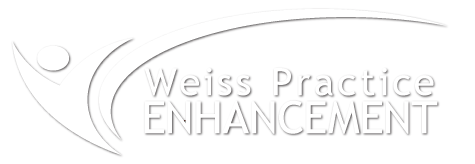If you had to identify, in one word, the reason why the human race has not achieved, and never will achieve, its full potential, that word would be “meetings.” Dave Berry
Do you not so secretly dread your team meetings because they are unproductive, repetitive and boring? Have you actually given up and cancelled team meetings because they are so painful? Read on to learn nine ways to transform frustrating staff meetings that everyone endures into engaging, essential conversations that move your practice forward.
Why Meetings Go Bad
I believe most meeting problems stem from misplaced intentions about why you’re having team meetings in the first place. Your intention is your goal for the meeting or what you want to accomplish.
Most dentists walk into meetings thinking their role is deliver information, identify practice issues and design solutions. Your intention is to share information that will change your team’s behavior. While this sounds logical, this means the meeting is focused on your goals and strategies. You are driving the meeting bus while the team are passive passengers.
Here is how this plays out from the team’s perspective.
| Dentist’s Intention | Team Member’s Reactions |
| Inform the team about your decisions and upcoming changes. | I listen and possibly take notes. If I feel safe, I might object to the Dr’s ideas, otherwise I’ll share my opinions at the unofficial meeting after the meeting in the break room without the dentist. |
| Review customer service issues and suggest improvements. | Listen to the Dr’s complaints, hope that I’m not personally blamed and consider the Dr’s solutions. |
| Deliver training to improve a system | Listen, possibly take notes if the topic is relevant. Consider implementing if the Dr seems committed otherwise have a wait and see attitude. Usually, waiting is best since the dentist forgets about new initiatives in a few weeks. |
| Review problems with a specific department | If I’m not in that department, tune out because it doesn’t apply to me. |
| Share statistics | Congratulate myself if I exceeded a goal otherwise daydream because these numbers don’t apply to me and I’m not interested. |
The dentist has worthy intentions, but the team is not engaged. That’s because the dentist has adopted a top-down approach. If you are the primary voice at your meetings – designing the agenda, identifying issues and solutions, then your team is disengaged because nothing is required of them.
It may seem counter-intuitive, but I want you to take more of a back seat at your meetings so that your team members become the drivers. Here is how.
Nine Tips for Participatory Team Meetings
- Instead of positioning yourself as the primary driver of these meetings, adapt a new intention that your role is to inspire and guide your team’s growth. This is the team’s meeting to run and experiment with. You may be the leader of the practice, but you are an equal participant at your team’s meetings.
- Once your intention shifts, the structure also changes. If you don’t lead the meetings anymore then each team member will rotate facilitation duties. The team facilitator is now in charge of ensuring that the meeting runs smoothly. S/he manages the meeting agenda and guides the conversation.
- Having a prepared agenda created by the team creates more buy-in. Post a blank meeting agenda in the staff room where employees record their ideas, questions and problems. Should you walk into a meeting where no one has put anything on the agenda, then the facilitator should lead a conversation about why that has happened and what the team wants to do about it.
- Ask the team to create a meeting structure that works for them. My suggestion is to divide the meeting time into segments.
- Segment 1: Individual check-in where each team member responds to an open-ended question created by the facilitator or shares a highpoint or low point of the week.
- Segment 2: Review the previous meeting’s decisions and action items to evaluate their progress.
- Segment 3: Discuss the agenda items recorded by the team. Each item should have a suggested time limit and include a follow-up step – a decision is made or further conversation is needed. If the group makes a decision, record this on a document along with who is accountable for implementation.
- Segment 4: Group evaluates their meeting on how well it went and what to do differently next time.
- Good meetings feel celebratory. The team can decide on how they want to recognize one another for a success, for having survived a hard week or difficult patient or for volunteering to help someone. They can give one another cards, certificates or high-fives.
- The team is responsible and accountable to each other so they need to develop a list of ground rules which describes how they want to treat each other and how they will respond to behaviors that violate the ground rules.
- The team decides when to meet. In my experience, it’s a mistake to schedule meetings over lunch or after work. Great meetings are held when everyone can concentrate, no one is rushed for time and there aren’t competing needs that would impair participation. The team needs to decide what will work best and this may mean taking an hour from patient care. It will be worth it.
- The team is responsible for their professional growth so they vote on topics they would like more training on. When team members attend conferences or develop an expertise that could help the team, they lead a training session during the meeting. Each quarter the team should answer two questions: What would I like to learn? What can I teach?
- Consider having one all-hands team meeting per month and then departmental meetings during the other weeks. Typically, team members feel more comfortable in smaller groups and this may enable them to resolve problems more effectively.
Ultimately your goal as the dentist is to develop your employee’s leadership skills. In order to make the changes I listed above, you will need to provide training, direction and support so that each individual can contribute to better meetings.
I can help you to design your compensation and reward system, develop your feedback and coaching skills and create a practice culture where the team is more involved and accountable to one another. Team meetings should become places where your team grows, collaborates and solves problems so that your practice can move forward.



